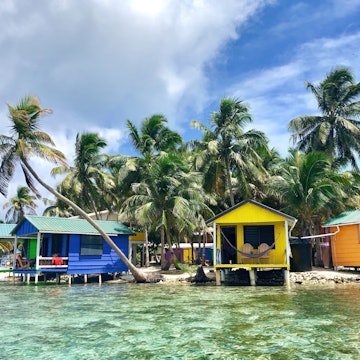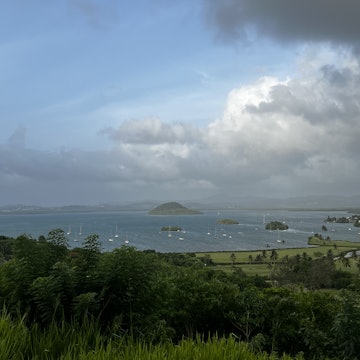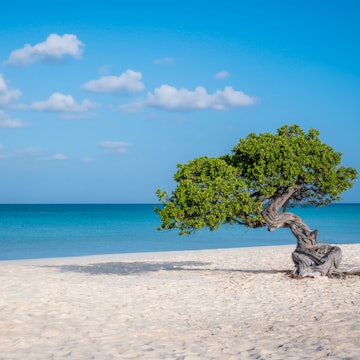

Air turbulence can be a scary experience – here's what happens when a flight gets bumpy © Tommaso Tuzj / Getty
Watching a flight attendant sent flying by turbulence – as seen in last year’s viral video onboard a flight from Pristina in Kosovo to Basel-Mulhouse on the Swiss-French border – is frightening. We imagine ourselves in the same situation, perhaps remembering times when we forgot to re-fasten our seatbelt when returning to our seat.
Rest assured: aircraft are designed to withstand substantial turbulence, while pilots and flight attendants are trained to steer you through it safely.
What causes air turbulence?
Why does turbulence, particularly clear-air turbulence, the sort that makes your flight bumpy, happen?
Let’s start with wake turbulence. Air behaves like a fluid (really!), so it's better think of the waves of wake coming from behind a boat’s hull. Aircraft do that too, but it’s invisible to our eyes. That’s why planes are separated by both distance and height from each other, and as a rule larger aircraft need more distance behind them for the wake to dissipate.

Since air traffic controllers know where aircraft are, wake turbulence is pretty rare. More common is "regular" clear-air turbulence, which is noticeable when the air creates eddies as it blows across the earth.
There are several reasons why air might swirl around in eddies, such as a large obstruction like a mountain, a storm, or where two different air masses butt into each other, especially if those masses of air are different temperatures. As a general rule, turbulence is really only predictable when it’s associated with other weather, like storms, which pilots tend to fly around to ensure a smoother ride.
What you should do during a turbulent flight
Planes are made to withstand turbulence, as you might see from a wingtip moving up and down in the event that it gets a bit bumpy. So the first tip is: don’t panic.
The crew is trained to keep you as safe as possible, so the real danger is if you – or other folks, or things – fly around the cabin. That’s why airlines recommend you keep your seatbelt fastened whenever you’re seated, why sometimes flight attendants will be sent back to their jumpseats if a bumpy ride is predicted, and why sometimes hot drinks won’t be served.
Make sure you and anyone you’re traveling with is strapped in, and try to avoid leaving things around your seat that might fly about and injure you or someone else.
Why air turbulence is going to get worse
With climate change making weather extremes more common, the science says we’ll probably see more of it. That means the chances that you’ll experience turbulence during a flight are bound to increase over the next few decades. Don’t worry too much right now, though: the predictions start from 2050 so it’s a bit down the road. Furthermore, severe turbulence isn’t very common – that’s why it hits the news when it happens. Last year there were over a hundred thousand flights a day on average, the overwhelming majority of which were uneventful.
What planes and pilots do to mitigate turbulence
Forecasting is improving, too, and – thanks to systems that pinpoint the location of planes more accurately than in the past – so is the accuracy of turbulence reporting by pilots. That allows nearby planes to either avoid the turbulence or stow the trolleys and have the flight attendants sit down.

In the future we’re likely to see automated sensors on planes feeding data back into massive algorithms that give us a much better idea of where turbulence happens. Once we have that information, other calculations can suggest more accurately where turbulence might occur.
And the smart folks at airplane manufacturers are looking into how to reduce the impact of turbulence when it happens. One future option is biomimicry, or replicating what happens in nature, with birds in this case. An albatross’ wingtips, for example, flap freely up and down. That might look pretty odd at airplane scale, but Airbus is working on a scale model to see what can be learned for the flights of the future.
Looking for more travel tips? Here are some travel hacks for your next long-haul flight.
This article was originally published in June 2019. It was updated in July 2020.














